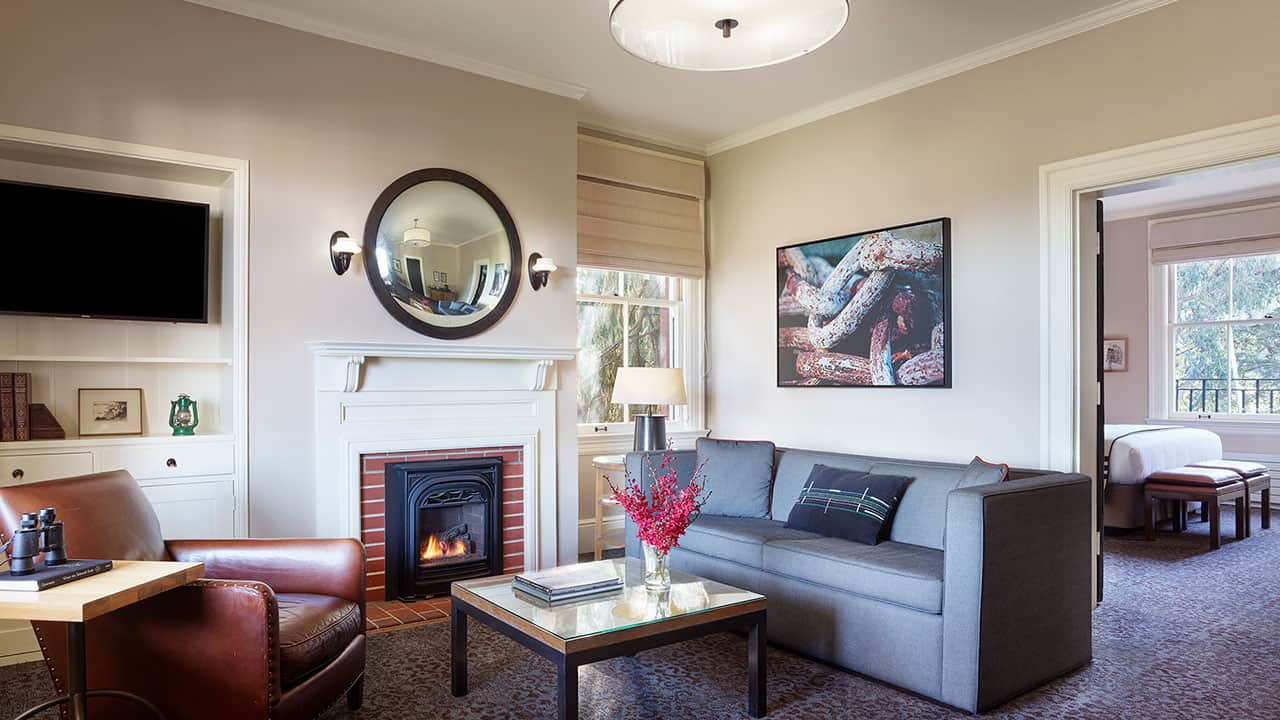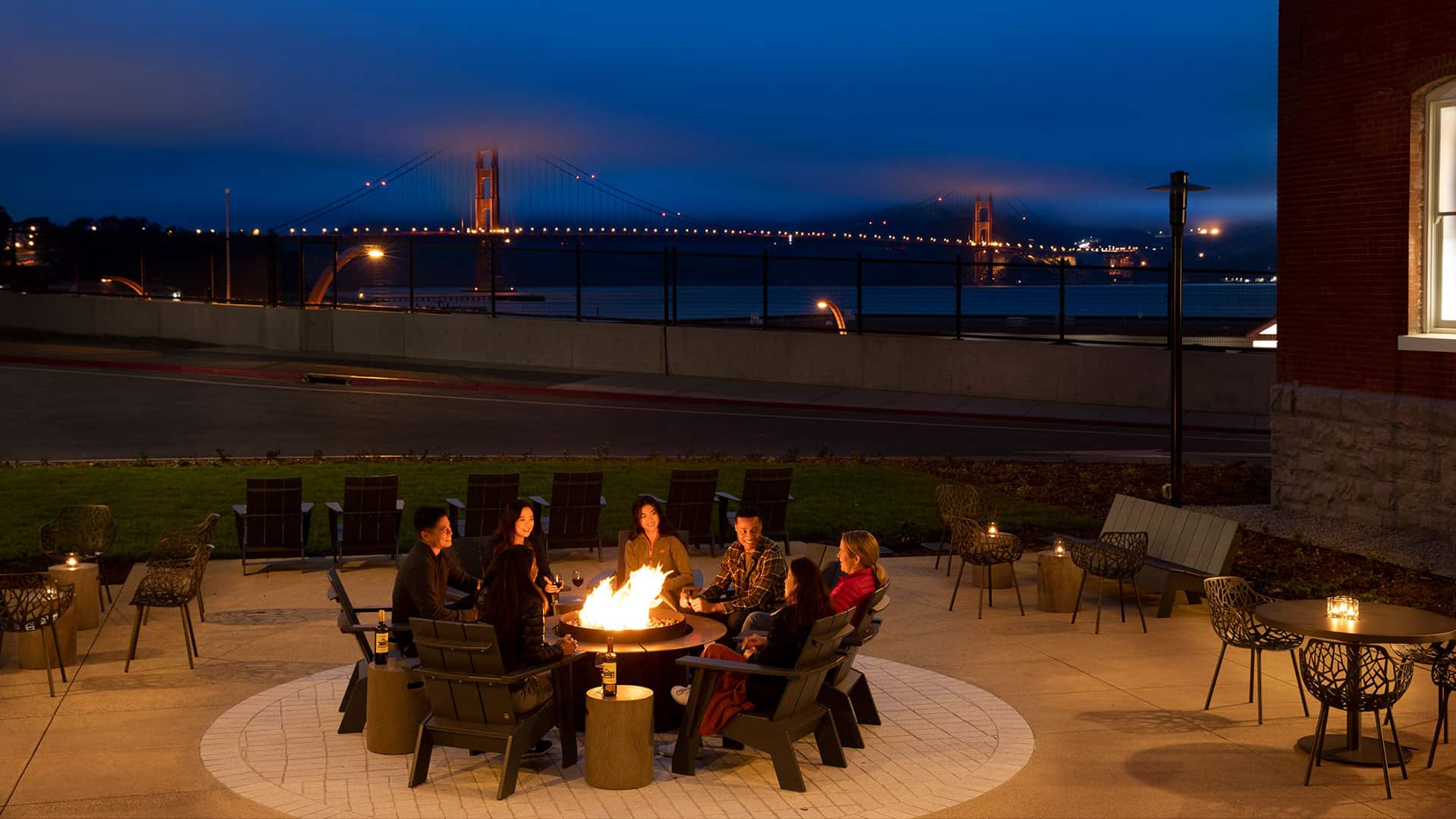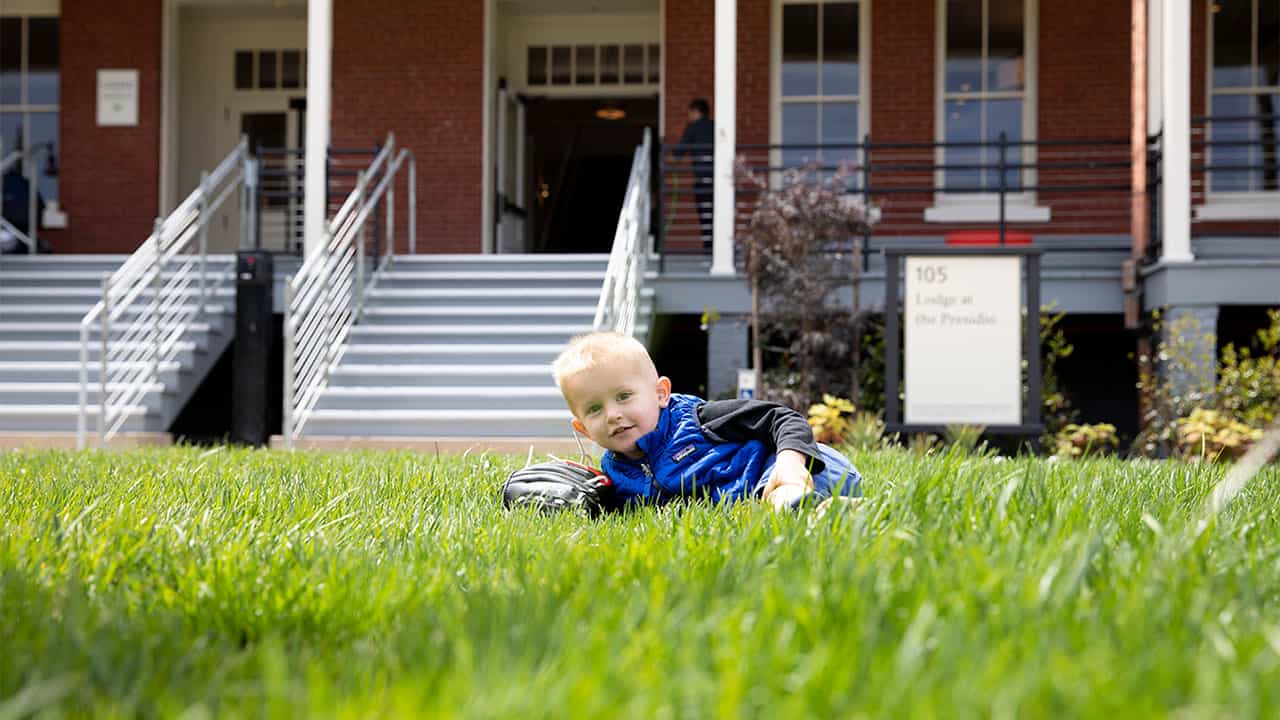
The Inn at the Presidio’s historic Funston House is a renovated officer’s quarters that provides a glimpse into the Presidio at the turn of the century, when it was the epicenter of Army efforts to save San Francisco at its time of greatest need. But who was “Funston”?
Brigadier General Frederick Funston (1865-1917) and his wife Eda Blankart Funston played a pivotal role in saving the city after the San Francisco earthquake of 1906. A decorated veteran of the war in the Philippines, Funston was known for his ability to make swift decisions under pressure, an ability that may have saved tens of thousands of lives in the immediate aftermath of the disaster. The Funston family’s importance to the city is memorialized in such places as Funston Avenue, Funston playground, and Fort Funston, as well as the Inn at the Presidio’s Funston House.
The Funston family awoke In the early hours of April 18, 1906 to their Presidio home shaking violently. Funston was in command of the Presidio while General Greely was away. With the city in panic, Funston immediately mobilized Army troops to help city authorities maintain order and fight fires. This was the first, and the only, time that the Army has ever deployed out of the Presidio.
Although Funston did not have clear guidelines or explicit authority, he took personal command of local law enforcement and relief efforts. Mayor Eugene Schmitz proclaimed,
“The Federal Troops, the members of the Regular Police Force and all Special Police Officers have been authorized by me to KILL any and all persons found engaged in Looting or in the Commission of Any Other Crime.”
Army troops patrolled the streets to deter looting, evacuate residents, and keep saloons closed. The soldiers’ role in quelling violence was controversial, but Funston always denied involvement of his regular Army troops in shooting any civilians.
The earthquake severed all telephone/telegraph lines in the city. Funston ordered the Presidio’s U.S. Army Signal Corps to set up a direct line to the Secretary of War in Washington. The Signal Corps set up 40 telegraph and 79 phone offices, which the city depended on until May 10th.
Fires from ruptured gas lines quickly spread throughout the city and threatened more damage than the initial quake. Army engineers were brought in to dynamite rows of buildings to stop the fire from spreading. While the fires finally stopped five days later, it is a matter of debate whether this strategy may have fed the fires as much as it actually helped control them from spreading. Funston’s tactics had profound consequences for San Francisco that can still be seen today. Most of the downtown area was destroyed and rebuilt with modern buildings, while the graceful older Victorian houses only survived west of Van Ness Avenue.

Funston opened up the Army General Hospital to civilians, as it was less damaged than others in the city. The Army also set up medical facilities and sanitation in the refugee camps, and provided food, water, and shelter for displaced citizens. The Army Field Hospital in Golden Gate Park and 26 medical dispensaries provided free medical care to thousands of civilians throughout the city. Eda Funston, a nurse, directed a nurses’ corps at the Presidio and assisted Dora Thompson, the Head Nurse at Letterman Hospital, in caring for the injured.





